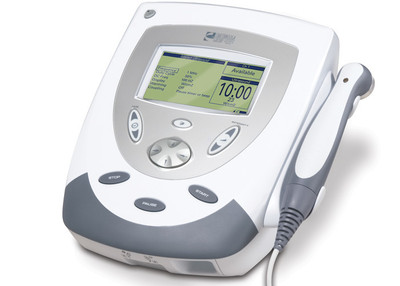 25th Jun 2018
25th Jun 2018
Treating Summer Injuries Successfully-Part Two

Welcome to part two of “Treating Summer Injuries Successfully.” Summer time means an increase in physical activities for most of our patients. From swimming to field sports like soccer, baseball, volleyball, as well as hiking and rock climbing, the list is endless of physical activities available to our patients. But with increased physical activity can also come an increased risk of injury. In a previous post, we explored superficially some of the injuries that can occur with summer sports.
While some of these injuries may be slightly frustrating, more severe injuries can lead to debilitating pain and a decreased ability to participate in those summer sports that our patients love. We’ve did a deeper discussion on a portion of the most common summer sport injuries in our part one of our series. Today, we’ll take a closer look at another list of possible injuries, symptoms and available treatment modalities that will help keep our patients healthy and active during summer time.
Treating Summer Sports Injuries-
Part Two
will include:
- Sprains
- Joint Dislocation
- Muscle Spasms
- Tendonitis
SPRAINS
Most patients have experienced a sprain. This type of injury typically occurs in joints like the wrist or ankle and occurs when the joint’s ligaments are twisted in a way that causes pain and swelling. Athletes that participate in tennis, running, baseball, soccer, and hiking are at risk for experiencing a debilitating sprain.
SPRAIN SYMPTOMS
Patients with a sprain may experience:
- Acute pain
- Local swelling
- Stiffness at the affective joint
- Bruising and skin discoloration
- Inability to put weight on affected joint
When a patient suffers a sprain, the first aid treatment of RICE- which stands for Rest, Ice, Compress, and Elevate is the best course for immediate treatment.
Cold Compression Therapy: Cold compression therapy is a wonderful go-to after an acute sprain which can be used for most joints, from wrists to ankles. With the combination of cold therapy and pneumatic compression, this modality offers patients with immediate relief to their sprain symptoms.
Ultrasound therapy: Ultrasound therapy is a great pain-relieving modality for sprains. In addition to different sized applicators that can be used for various parts of the body, with the ability to offer 3 MHz treatment, practitioners can treat superficial tissues like wrists and ankles, two common sites for sprains.
HELPING PATIENT’S PREVENT A SPRAIN
Conditioning is the name of the game when it comes to preventing sprains. Primarily this means making sure that muscles surrounding joints are strong enough to stabilize the body during movement. Tools like therapy bands and balance trainers are just two of the innovative devices available to physical therapists to provide graduated strength training designed to limit future sprains.
JOINT DISLOCATION
Joint dislocations are an extremely painful injury that occurs when the bone slips out of its joint. Joint dislocations can occur at any joint like shoulders, elbows, wrists, knees or ankles, causing significant damage to surrounding nerves, tendons, muscles and ligaments. Typically, dislocations occur after sudden trauma. Athletes that participate in summer sports like soccer, football, or baseball are at risk for joint dislocations.
JOINT DISLOCATION SYMPTOMS
Patients with joint dislocations may experience:
- Intense pain
- Stiffness
- Swelling
- Bruising and/or redness
- Decreased range of motion
- Muscle weakness
Dislocations require immediate medical attention. After the dislocation has been addressed, physical therapy will help regain strength and mobility while reducing pain after injury.
Cold Therapy: Cold therapy provides an analgesic effect for patients recovering from a joint dislocation. Icing is appropriate for acute pain and for any triggered pain that can occur due to mobilization or therapeutic exercise during treatment.
Moist Heat: Moist heat is an effective pain-relieving treatment once the acute pain after a dislocation has decreased and patients pain is more diffuse. Additionally, moist heat can be used in conjunction with ice packs or cold therapy to provide patients with contrast therapy which has shown to be beneficial in reducing pain and improving range of motion.
HELPING PATIENTS PREVENT JOINT DISLOCATION
Unfortunately, once a patient experiences a joint dislocation, they are at a higher risk for a reoccurrence. Physical therapy, using various strength training equipment and techniques, can help focus on strengthening and stabilizing the muscles surrounding the affected joint.
MUSCLE CRAMPS AND SPASMS
Muscle cramps and spasms can be extremely painful and usually occur after strenuous activity, but can also be caused by dehydration, poor circulation, lack of stretching, fatigue, etc. Most muscle spasms may reduce on their own, while others may require treatment and training to reduce them from recurring.
MUSCLE SPASM SYMPTOMS
Muscles spasms have distinctive symptoms and patients may experience:
- Sharp and acute pain
- Sudden shortening or contractions of a specific muscle or group
- Stiffness
- Reduced range of motion
Physical therapy has a number of effective modalities which can help address these symptoms including:
Ultrasound therapy: Ultrasound therapy can penetrate deep in to the muscle tissues helping soothe sharp muscle spasm pain. Ultrasound therapy is a great treatment, because it can be used alone or coupled with another treatment: electrical stimulation as part of a combination unit to help eradicate chronic muscle spasms.
Electrical Stimulation: Electrical stimulation helps halt the pain impulses from being sent and received to the brain. This helps give immediate pain relief. What’s more, there are portable e-stim devices to help treat patients anywhere you need to.
HELPING PATIENTS PREVENT MUSCLE SPASMS
Patient education about proper stretching, warm-ups and recovery techniques are important for helping patients avoid muscle spasms.
TENDONITIS
Tendonitis is a condition that can affect any of the tendons of your body and occurs when this fibrous tissue is irritated, torn, or inflamed. Tendonitis is an over-use injury and can be found in such summer sports as tennis, golf, racquet ball, and baseball.
TENDONITIS SYMPTOMS
Patients with tendonitis may experience:
- Local pain at the joint and surrounding area
- Weakness of the affected limb
- Redness at site of injury
- Limited range of motion
Tendonitis can be tricky because it can feel better in a few days or it can take several months to heal. While rest and ice can help reduce symptoms, physical therapy can also help relieve tendonitis.
Iontophoresis: Iontophoresis is an effective pain-relieving device which helps calm tendonitis by delivering iontophoresis medication to the affective area.
Kinesio tape: Kinesio tape is a great retraining tool that helps provide necessary support and/or decreases the load placed on the tendon. Additionally, kinesio tape helps retrain to how the body responds to a load and/or movement.
HELPING PATIENTS PREVENT TENDONITIS
Patients with tendonitis need to take it slow when it comes to resuming activities with repetitive motion. Additionally, patient education on warm-up stretches and cool-down techniques will help avoid future injury.
Contact Us Today
We can help your practice find the latest and advanced devices and equipment to help you treat patients with summer sports injuries. Contact us today and we’ll locate the perfect modalities as well as any necessary accessories and supplies. Call us today at 1-801-770-3328.





